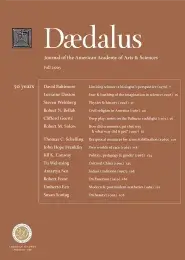Physics & history (1998)
I am one of the few contributors to this issue of Dædalus who is not in any sense a historian. I work and live in the country of physics, but history is the place that I love to visit as a tourist. Here I wish to consider, from the perspective of a physicist, the uses that history has for physics, and the dangers both pose to each other.
I should begin by observing that one of the best uses of the history of physics is to help us teach physics to nonphysicists. Although many of them are very nice people, nonphysicists are rather odd. Physicists get tremendous pleasure out of being able to calculate all sorts of things, everything from the shape of a cable in a suspension bridge to the flight of a projectile or the energy of the hydrogen atom. Nonphysicists, for some reason, do not appear to experience a comparable thrill in considering such matters. This is sad but true. It poses a problem, because if one intends to teach nonphysicists the machinery by which these calculations are done, one is simply not going to get a very receptive class. History offers a way around this pedagogical problem: everyone loves a story. For example, a professor can tell the story (as I did in a book and in courses at Harvard and Texas) of the discovery of the subatomic particles–the electron, the proton, and all the others.1 In the course of learning this history, the student–in order to understand what was going on in the laboratories of J. J. Thomson, Ernest Rutherford, and our other heroes–has to learn something about how particles move under the influence of various forces, about energy and momentum, and about electric and magnetic fields. Thus, in order to understand the stories, they need to learn some of the physics we think they should know. It was Gerald Holton’s 1952 book Introduction to Concepts and Theories of Physical Science that first utilized precisely this method of teaching physics; Holton told the story of the development of modern physics, all the while using it as a vehicle for teaching physics. Unfortunately, despite his efforts and those of many who came after him, the problem of teaching physics to nonphysicists remains unsolved. It is still one of the great problems facing education–how to communicate “hard sciences” to an unwilling public. In many colleges throughout the country the effort has been given up completely. Visiting small liberal-arts colleges, one often finds that the only course offered in physics at all is the usual course for premedical students. Many undergraduates will thus never get the chance to encounter a book like Holton’s.
. . .
